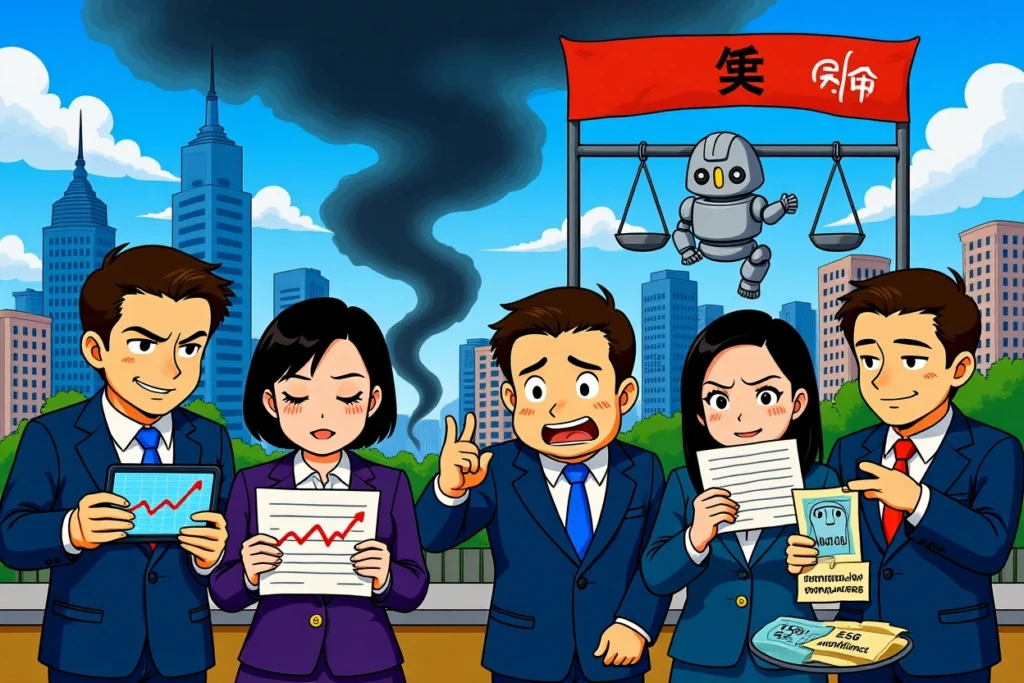Key Developments in Bosch’s Workforce Restructuring
- Bosch confirms up to 1,100 job cuts at Reutlingen plant by 2029, affecting 11% of location’s workforce
- Decision driven by 25% sales decline in electronic control units over past two years
- Production shift from automotive ECUs to semiconductors reflects strategic repositioning
- European auto component market faces unprecedented price pressure from Asian manufacturers
- Restructuring highlights broader challenges facing Germany’s industrial heartland
The aftershocks of the global automotive crisis are shaking Germany’s industrial pillars, with Bosch announcing drastic job cuts signaling structural shifts. Recently revealed plans detail elimination of 1,100 positions at Bosch’s Reutlingen manufacturing hub near Stuttgart, a strategic retreat reflecting weakening demand for internal combustion components. The automotive market downturn stretches beyond pandemic disruptions as semiconductor innovation collides with legacy manufacturing realities. Bosch’s semiconductor pivot reflects painful strategic adaptation, yet highlights deeper European competitiveness issues. As Volker Hartmann, Frankfurt-based automotive analyst notes, “This isn’t cyclical adjustment – it’s tectonic realignment.”
The Anatomy of Bosch’s Restructuring Plan
Bosch’s reorganization targets operations producing electronic control units (ECUs) – mission-critical components that manage engine performance across modern vehicles. Over the past 36 months, ECU sales have declined approximately 25% across European markets according to internal Bosch sales reports cited by Handelsblatt.
Reutlingen Plant Transformation Timeline
The five-year transition period includes:
- Phase 1 (2025-2026): Gradual ECU production wind-down with 300 position reductions
- Phase 2 (2027-2028): Semiconductor facility expansion requiring workforce reskilling
- Phase 3 (2029): Complete operational restructuring with net 1,100 job losses
Why ECU Manufacturing Has Become Unsustainable
Bosch Semiconductor lead Dirk Kress emphasizes three market shifts:
- Post-COVID supply chain normalization reversing pandemic scarcity premiums
- Asian suppliers capturing ECU market share through aggressive pricing
- Rising EV adoption reducing ECU complexity and volume requirements
Underlying Factors Driving Auto Industry Transformation
The automotive market downturn extends beyond Bosch, reflecting fundamental industry transitions:
European Cost Structure Disadvantages
European manufacturers face 37% higher operating costs than Asian counterparts according to KPMG’s Automotive Compass report. Localization compliance requirements drive specific disadvantages:
- Energy costs: EU electricity rates average €0.30/kWh vs China’s €0.08/kWh
- Labor regulations: Germany’s 47% mandatory wage-related deductions
- EU carbon tariffs: Upcoming CBAM implementation impacting raw material sourcing
Emerging Manufacturer Competition Dynamics
Dirk Kress highlights “market disruption” from China-based component manufacturers leveraging government subsidies and vertically integrated supply chains. Recent entrants like Contemporary Amperex Technology Co Ltd (宁德时代) capture 35% global EV battery market share through rapid scaling impossible in Europe’s regulatory environment.
Strategic Implications for Bosch and German Autobahn
The Semiconductor Bet Rationale
Bosch Reutlingen will specialize in sensors and power electronics essential for autonomous driving systems – a projected €90 billion market by 2030 (McKinsey analysis). The strategy prioritizes chips requiring advanced fabrication like:
- Radar sensors for ADAS
- Power semiconductors maximizing EV efficiency
- Infotainment microcontrollers
Existing Dresden wafer plant integration creates crucial synergy, leveraging €2 billion semiconductor investments Bosch made pre-pandemic.
Broader Autozulieferer Industry Concerns
Germany’s automotive suppliers employ 360,000 workers – 90,000 jobs at risk by 2030 predicts Fraunhofer Institute research. Component manufacturers face existential challenges:
| Supplier Segment | Projected Workforce Reduction | Primary Threat Factors |
|---|---|---|
| Powertrain Components | 35-45% | EV adoption, market consolidation |
| ECU/Electronics | 15-25% | Asian competition, commoditization |
| Sensors/Semiconductors | 5-10% potential growth | Specialization premium, innovation race |
Broader Implications Across Automotive Ecosystem
German Workforce Transition Challenges
IG Metall predicts industrial workforce displacements will accelerate across Baden-Württemberg regions. Labor representatives demand:
- Retraining programs targeting Industry 4.0 automation roles
- Early retirement packages supplementing government programs
- Relocation assistance favoring other Bosch facilities
The looming mismatch involves 35% of affected workers lacking digitalization skills needed in semiconductor operations according to German Economic Institute projections.
European Policy Responses Taking Shape
Brussels’ automotive rescue package (May 2024) targets competitive restoration through:
- Strategic autonomy funding accelerating €220 billion battery projects
- SME digitalization subsidies reducing automation adoption costs
- Academic partnerships building chip industry talent pipelines
These measures directly counter Tesla’s Berlin Gigafactory scaling advantage and BYD’s upcoming European manufacturing presence.
The Road Ahead for Bosch and European Suppliers
Reutlingen’s transformation signals irreversible industry pivots – Clairvest Group analysts project Europeans will control just 15% of future EV component sales. Bosch’s painful moves acknowledge hybrid/EV market dominance requires vertical reorientation toward technologies commanding premium pricing. While semiconductors promise brighter horizons, workforce transitions present intermediate socioeconomic gaps needing urgent mediation.
The automotive market downturn reshapes competitive landscapes beyond temporary recession impacts – strategic survivors must reinvent skills ecosystems while industry stakeholders demand accelerated policy interventions. Automakers should proactively diversify supply networks while monitoring technology partners’ strategic shifts. Subscribe to our Industry Transformation Alert Series for actionable strategic intelligence on navigating these disruptive changes.




